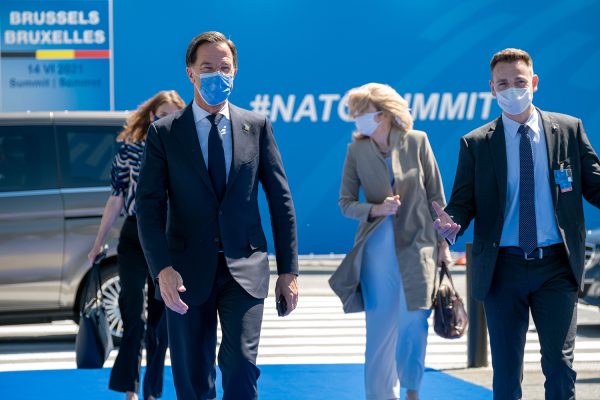
Dutch prime minister Mark Rutte finds himself between a rock and a hard place.
His government’s plan to reduce pollution from farms, which requires reductions in livestock, has caused farmers and their sympathizers to leave his liberal VVD and Christian democratic coalition partner, CDA. Both parties are down in the polls.
But to the extent that Rutte is willing to give in to farmers’ demands, it disappoints left-wing voters, which hurts his other governing partner, D66.
It’s one of the issues I discussed last week with Alex Keeney and Atlantic Sentinel contributor Pratik Chougule on their podcast for political prediction markets, Star Spangled Gamblers. Can the center in the Netherlands hold?
Familiar challenge
Rutte’s challenge isn’t new. When one in five Dutch voters supported far-right parties in 2019, I wrote for the Atlantic Council that the result would likely be an even broader coalition in the center, lending credence to the far right’s claim that all mainstream parties are the same.
Other European democracies have seen the same dynamic: growing extremes force mainstream parties to meet in the middle, resulting in indecisive left-right coalitions that push more voters to the flanks.
Rutte’s coalition is center-right, but it needs the support of the left-wing Labor Party and Greens in the Senate. Opposition comes from the Socialists on the far left and various parties on the far right.
Rutte’s VVD (of which I am a member) remains the largest party, but its support has fallen from 27 percent in the 2012 election to 22 percent in 2022 to 17-19 percent in recent polls.
The Christian Democrats, until 2010 the largest party, are polling at just 4 to 7 percent.
Farmers betrayed, environmentalists worry
Farmers feel betrayed by the center-right and are turning to the more right-wing JA21 and Farmer-Citizen Movement, two upstart political parties that are polling at a combined 10-14 percent. Support for Geert Wilders’ far-right Freedom Party is stable at 10 percent.
Also up are the Labor Party, animal rights party and Greens. They have long argued for reductions in livestock — the Netherlands has the highest livestock density in the world — for the sake of animal welfare and reducing pollution. They are drawing voters from the left-liberal D66, which is down from 15 percent in the last election to 8-11 percent in the polls.
D66 also campaigned on reducing farming but agreed to set reduction targets for emissions, not animals. Farmers hope, and animal-rights activists and environmentalists worry, that innovations in feed and stable design (including robots that sweep up and separate dung from urine) will reduce emissions sufficiently to avoid shrinking farms.
Dutch emissions are high
The Netherlands’ 115 million chickens, cows and pigs cause high ammonia and methane emissions.
Ammonia pollutes EU conservation areas, which the Dutch government has a legal obligation to protect. Farms cause about 85 percent of ammonia emissions. For details, read my story from June.
100 countries, including the Netherlands, agreed in Glasgow last year to slash methane emissions — a greenhouse gas — by 30 percent in 2030. Farms cause almost 70 percent of Dutch methane emissions.
Not all farms can be saved
The government wants to halve ammonia emissions by 2030, which should achieve a similar reduction in methane emissions.
The expectation is that most farms will be able to meet their targets — which vary depending on their proximity to conservation areas — by diversifying (growing crops in addition to rearing animals or selling animal tissue for cultured meat), downsizing, investing in new technologies or switching to ecological farming. In most cases, it will require a combination of at least two out of four. All four options are subsidized by the government.
But not all farms can be saved. Those bordering conservation areas will likely be expropriated.
The government is making €32 billion, including €25 billion in new spending, available to subsidize investments and buy out farmers. That works out to €1 million per farm.
Provinces in revolt
Many farmers consider the plans an attack on their way of life and have protested, sometimes violently. In the last few days, farmers have blocked motorways, public buildings and warehouses with their tractors. They scuffled with police outside the home of a cabinet minister. Several lawmakers have received death threats. Food distributors have struggled to fill supermarket shelves in several cities.
Provincial deputies of Rutte’s VVD and the CDA are in revolt. They would have to convert national goals into regional policy, which could mean deciding on a case-by-case basis which farms can stay and which need to go. Those are decisions they don’t want to make.
Especially when they are up for reelection in March. Turnout in provincial elections is usually low, but the farm crisis could galvanize opposition.
That would put Rutte’s working majority in the Senate at risk, since provincial deputies elect the chamber in May.
